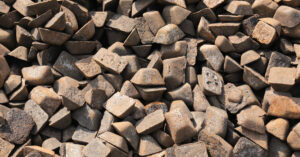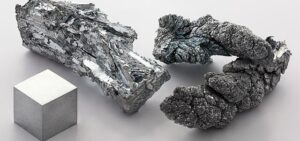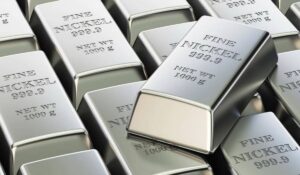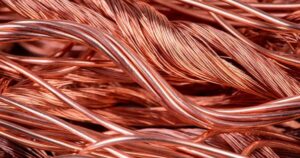
In January-November 2025, Ukraine exported 118.62 thousand tons of eggs in shells, which is 66.6% more than in the same period of 2024, according to the State Customs Service.
According to published statistics, in monetary terms, egg exports increased 2.7 times, to $183.37 million, compared to $67.14 million a year ago.
The top three buyers of Ukrainian eggs were Spain, which accounted for 17.9% of exports of this product, or $32.76 million in monetary terms, the United Kingdom – 14% and $25.69 million, respectively, and the Czech Republic – 11.6% and $21.19 million. Last year, Israel led the way in purchasing Ukrainian eggs, accounting for 14.8% of exports worth $9.91 million, followed by Poland with 11.9% worth $8 million and Italy with 11.1% worth $7.46 million.
Ukraine’s egg imports during the reporting period increased by 18.4% to 9.53 thousand tons, bringing in $54.36 million in monetary terms, which is 48.3% more than in the same period last year.
The leaders in egg supplies to Ukraine during the reporting period of 2025, as in 2024, were the Netherlands (41.4% and 46.3% of imported volumes, respectively), the Czech Republic (28.9% and 24.2%), and Germany (13.9% and 18.5%).
Exports of shelled eggs in the first 11 months of this year decreased by 5.3% to 6.64 thousand tons, while cash proceeds from their sale increased by 26.5% compared to the same period in 2024, to $38.54 million. The main buyers of domestic egg products were Italy (32.5%), Poland (29%), and Denmark (16.8%).
Imports of this product in January-November 2025 amounted to 58 tons, compared to 105 tons a year ago. Suppliers of shelled eggs this year included France (80.7%), Sweden (18.8%), and Poland (0.6%), while in 2024 they were France (85.2%), Sweden (10.9%), and Austria (3.7%).

In January-November of this year, Ukraine increased exports of processed pig iron in physical terms by 49% compared to the same period last year, to 1 million 734,104 thousand tons.
According to statistics released by the State Customs Service (SCS) on Friday, during the specified period, pig iron exports in monetary terms increased by 48.5% to $669.118 million.
At the same time, exports were mainly to the United States (74.77% of shipments in monetary terms), Italy (13.09%), and Turkey (4.13%).
In the first 11 months of this year, the country imported 39,000 tons worth $78,000 from Germany (51.95%) and Brazil (48.05%), while in January-November 2024, 25 tons of cast iron worth $60,000 were imported.
As reported, on March 12 of this year, in accordance with President Donald Trump’s decision, the US began imposing a 25% tariff on imports of Ukrainian steel products, except for cast iron.
In 2024, Ukraine reduced its exports of processed cast iron in physical terms by 3.4% compared to 2023, to 1 million 290.622 thousand tons, and in monetary terms by 6.1%, to $500.341 million. Exports were mainly to the US (72.64% of shipments in monetary terms), Turkey (8.03%), and Italy (7.30%).
For the whole of 2024, the country imported 38 tons of pig iron worth $90 thousand from Germany, while for the same period in 2023, it imported 154 tons of pig iron worth $156 thousand.

Imports of zinc and zinc products in January-November 2025 fell by 11.3% to $48.590 million. In November, imports amounted to $3.070 million.
Zinc exports for the 11 months of 2025 reached $1.166 million, in November — $22 thousand, while in January-November 2024 it was $463 thousand.
In 2024, imports of zinc and zinc products increased by 27.5% to $58.610 million, while exports amounted to $563 thousand.
In 2023, the country increased imports of zinc and zinc products to $45.966 million (+18.8%), while exports fell to $130,000 compared to $1.331 million in 2022.
Pure metallic zinc is used to recover precious metals, protect steel from corrosion, and for other purposes.

The volume of exports of insulated wires and cables, including fiber optic cables, from Ukraine in January-November 2025 increased by 9.6% in monetary terms compared to the same period in 2024, reaching $1.315 billion, according to data from the State Customs Service.
Germany remains the largest importer of Ukrainian cables and wires, as it was a year earlier, but supplies to this country decreased by 6.8% to $443.7 million, and its share in total exports decreased by 5.9 percentage points to 33.7%.
The top three buyers also included Hungary with purchases worth $217.7 million (16.6% of exports) and Poland with $208.5 million (15.85%), while in January-November 2024, Poland ($172.4 million, 14.4%) and the Czech Republic ($155.9 million, 13%) were in second and third place.
In November 2025, exports of insulated wires and cables exceeded $117 million, which is 5.4% more than in November of the previous year.
According to the State Customs Service, in 2024 Ukraine already increased exports of these products by 60.2% compared to 2023, to $1.275 billion.

In January-November 2025, Ukraine reduced imports of nickel and nickel products by 0.3% compared to the same period in 2024, to $23.592 million. In November, imports of nickel and nickel products amounted to $2.546 million.
Exports of nickel and nickel products in January-November 2025 amounted to $1.245 million (in November — $113,000) compared to $585,000 in the first 11 months of 2024.
In addition, Ukraine increased imports of nickel and nickel products by 73.7% in 2024 compared to 2023, to $26.730 million.
At the same time, in 2023, it reduced imports of nickel and nickel products by 74.2% compared to 2022, to $15.391 million.
Exports of nickel and nickel products in 2024 amounted to $602,000, while in 2023 they amounted to $532,000, and in 2022 — $1.268 million.
Nickel is used in the production of stainless steel and for nickel plating. Nickel is also used in the production of batteries, in powder metallurgy, and in chemical reagents.

In January-November of this year, Ukrainian enterprises increased imports of copper and copper products in value terms by 25.8% compared to the same period last year, to $160.184 million.
According to statistics released by the State Customs Service of Ukraine on Friday, exports of copper and copper products during the specified period increased by 15.3% to $93.531 million.
In November, copper imports amounted to $12.131 million, while exports amounted to $9.511 million.
As reported, in 2024, Ukraine maintained imports of copper and copper products in value terms at the previous year’s level — up to $140.797 million, while exports grew by 22.4% — up to $88.237 million.
In 2023, Ukraine increased imports of copper and copper products by 2.2 times compared to 2022, to $140.795 million, while exports decreased by 20.1%, to $72.078 million.
Copper is widely used in electrical engineering, in the production of pipes, for creating alloys, in medicine, and in other industries.